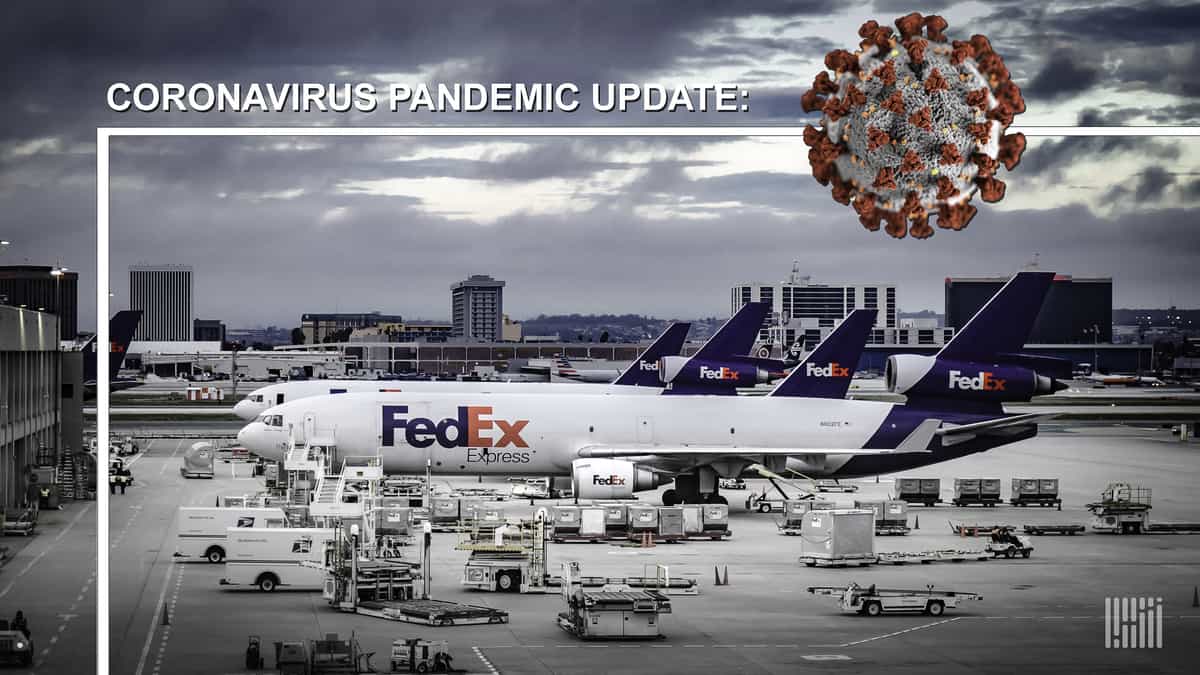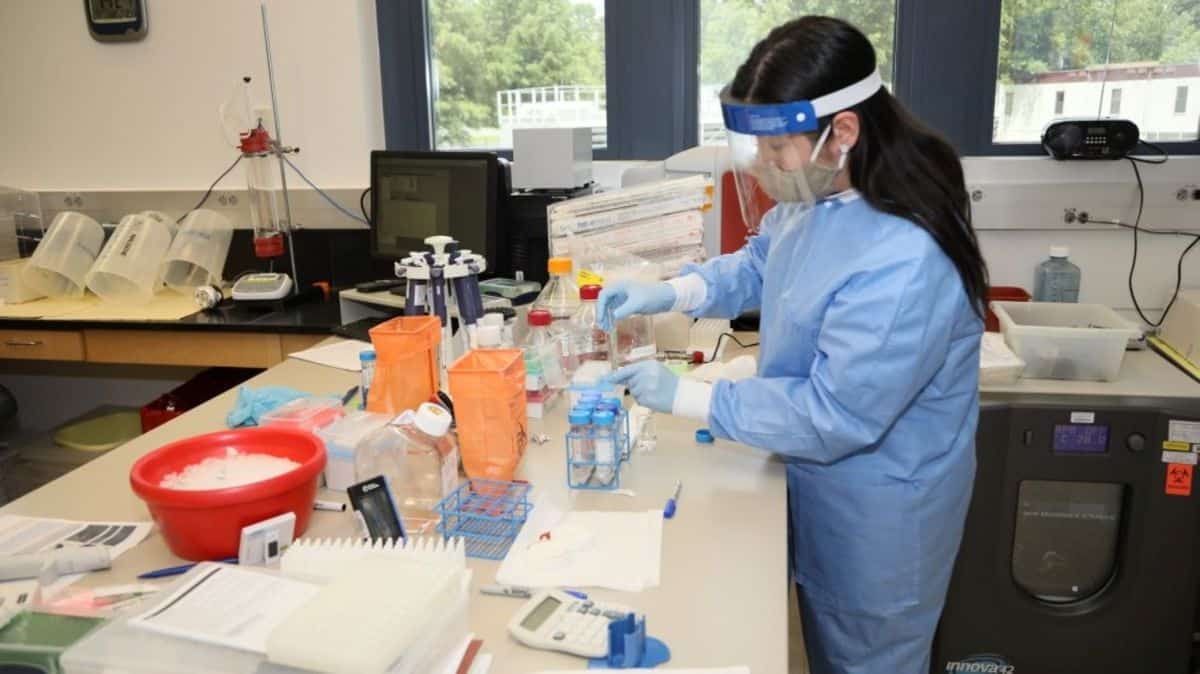About 40 million doses of two leading COVID-19 vaccines could be available for nationwide distribution by the end of December, with similar amounts metered out each month afterward in a carefully synchronized manner to ensure all jurisdictions have a predictable supply, Operation Warp Speed officials said at a press conference Wednesday.
Vaccine candidates from Pfizer Inc. (NYSE: PFE) and Moderna (NASDQ: MRNA) are expected to soon be authorized for emergency use by the Food and Drug Administration (FDA) after the companies this week said they were effective 95% of the time at preventing coronavirus symptoms.
The federal task force coordinating the nationwide immunization campaign has been working closely with jurisdictions to learn where they want vaccines to be shipped. Distribution is scheduled to begin within 24 hours of FDA authorization.
“The governors and the states will figure out the plan and we are ready to execute as we’ve been working on for six months, doing numerous tabletop exercises and now extending it into actual rehearsals of how to move the product from fill finish sites to distribution centers down to actual administration sites,” Army Gen. Gus F. Perna, chief operations officer of Operation Warp Speed (OWS), said.
“After the initial push, we will begin a weekly cadence of delivery of vaccine … to ensure that we rapidly expand the availability to the entire country simultaneously,” he said. A routine flow is important “so that jurisdictions can plan for it and develop execution of the administration in a routine method so that the population is well informed and they know when and where to get the vaccine.”
Pfizer and Moderna have already started to stockpile vaccine doses because the U.S. government took the financial risk to invest upfront so companies could begin manufacturing and clinical trials before the drugs were determined to be effective. Under an agreement with the government, Pfizer will deliver 100 million doses with an option for an additional 500 million doses. OWS has provided about $2 billion in funding and operational support for development, manufacturing and delivery for similar quantities of the Moderna vaccine.
The stockpile will have 40 million doses by late December “and an equivalent, or slightly higher amount, on a monthly basis going forward to start immunizing the U.S. population,” said Dr. Moncef Slaoui, chief adviser for OWS.
Forty million doses is enough to vaccinate about 20 million Americans, with the initial tranche targeted at frontline health care workers. After that, the Centers for Disease Control will prioritize distribution to nursing homes and other vulnerable groups and then vaccines will be allocated to states and other jurisdictions on a pro rata basis based on population.
The federal government made development investments in five different vaccines, utilizing the military’s logistics procurement skills to help manufacturers obtain all necessary materials and make sure there were no delays in production. It has upfront prepurchase agreements with six vaccines and a contract with McKesson Corp., a large health care distributor, to manage distribution to the country, with FedEx and UPS as the primary delivery subcontractors. Pfizer has an arrangement to ship directly from manufacturing sites to the designated administration sites.
In addition to the Pfizer and Moderna vaccines, two more vaccines are showing promise and could produce efficacy results by early January, Slaoui said.
OWS, led by the departments of Defense and Health and Human Services (HHS), has also procured ancillary supplies like needles, alcohol swabs and personal protective equipment that McKesson will assemble into kits to be paired up with vaccine supplies as they are distributed.
Last week, OWS reached nationwide agreements to allow administration of the vaccine by pharmacy chains and networks of independent pharmacies to cover more than 60% of the pharmacies across the country.
“The ultimate goal here is to make getting a COVID vaccine as convenient as getting a flu shot,” HHS Secretary Alex Azar said.
Last month, the CDC published its interim vaccination program playbook, which state health departments used to develop comprehensive vaccine distribution plans. The CDC is currently reviewing the plans.
The nation’s 64 vaccination jurisdictions have to finish a few more steps to be ready for deliveries, according to Perna.
He urged health departments to submit their final lists of vaccine providers because OWS can only deliver to enrolled facilities, to sign data use agreements and keep practicing their administration plans.
The data use agreements are important to help track every person who received a shot and ensure there aren’t imbalances between supply and demand, especially since five of the six vaccine candidates require two doses three weeks apart. Providers will also use the information to notify people to return for their second dose.
“We must be able to see who got their first dose, where they got it and what vaccine they received so we can ensure the same [delivery] for the second dose we are sending out,” Perna said. “Our ability to track the uptake, the actual administration of the shot in an arm, is going to be essential to us being able to deliver a vaccine on a continuous basis.”
Perna added that jurisdictions need to check and double-check their plans to make sure everything is in place as OWS ramps up real-world rehearsals to see how hospitals and other facilities receive, unload, store and administer the vaccines.
On Monday, Pfizer announced it has launched a pilot delivery program for its experimental COVID vaccine with four states. The results will be used to refine its distribution plan as the program rolls out. Rhode Island, Texas, New Mexico and Tennessee were selected because of their differences in overall size, diversity of populations and immunization infrastructure, as well as their need to reach individuals in varied urban and rural settings, the company said. The four states will not receive vaccine doses earlier than other states or receive preferential consideration, it emphasized.
OWS developed a high-speed computer system that gives federal officials and states a view in one system of the entire COVID vaccine supply chain to support distribution and allocation. The Tiberius platform integrates data from various sources, including the CDC, U.S. Census, state health offices and HHS to provide a picture of manufacturing, clinical trials, logistics, allocation, state and territory planning, delivery and administration of both vaccine products and kits.
Once officials decide how to prioritize the initially limited doses, OWS will input the information into Tiberius to compute the quantities to be allocated to each jurisdiction, according to the Defense Department. Jurisdictions will work inside the platform to decide where every allocated does will go — from local doctors’ offices to large medical centers — and distributors will then complete deliveries.
Perna said careful planning should eliminate the possibility for any vaccine to be wasted. The concern arises because of the need to maintain the drugs at the correct temperature for stability. The situation is particularly relevant for Pfizer’s vaccine, which must be stored at minus 70 degrees Celsius (minus 94 Fahrenheit) or more.
The Pfizer thermal shipping container contains 975 doses, or 195 per tray. Once the vaccines thaw, they can be kept in normal refrigeration — minus 2 to minus 8 C — for five days.
The Moderna vaccine, which initially stores at minus 20 degrees C, comes in trays of 100 doses.
Pharmacies such as Walgreens and CVS “know how to break down and do small quantities. And we did detailed plans with them, working with the jurisdictions so that no vaccine is wasted so that when they go to immunize they have the right techniques and procedures to make sure that only the required doses are reduced to the right temperature for administration and that the others stay at the right temperature for stability,” Perna said.
Click here for more FreightWaves/American Shipper stories by Eric Kulisch.
RELATED NEWS:
Biden transition freeze could harm COVID vaccine logistics, adviser says
Pfizer to bypass U.S. government system for COVID vaccine distribution
Pfizer plans ‘just-in-time’ COVID-19 distribution in Canada
DoD planning ‘every logistical detail’ of COVID vaccine distribution
FEMA launches 5-year supply chain plan for pandemic preparedness
Trump says military assets poised for COVID vaccine distribution
US Air Force could deploy freighters to fly truckloads of vaccines












